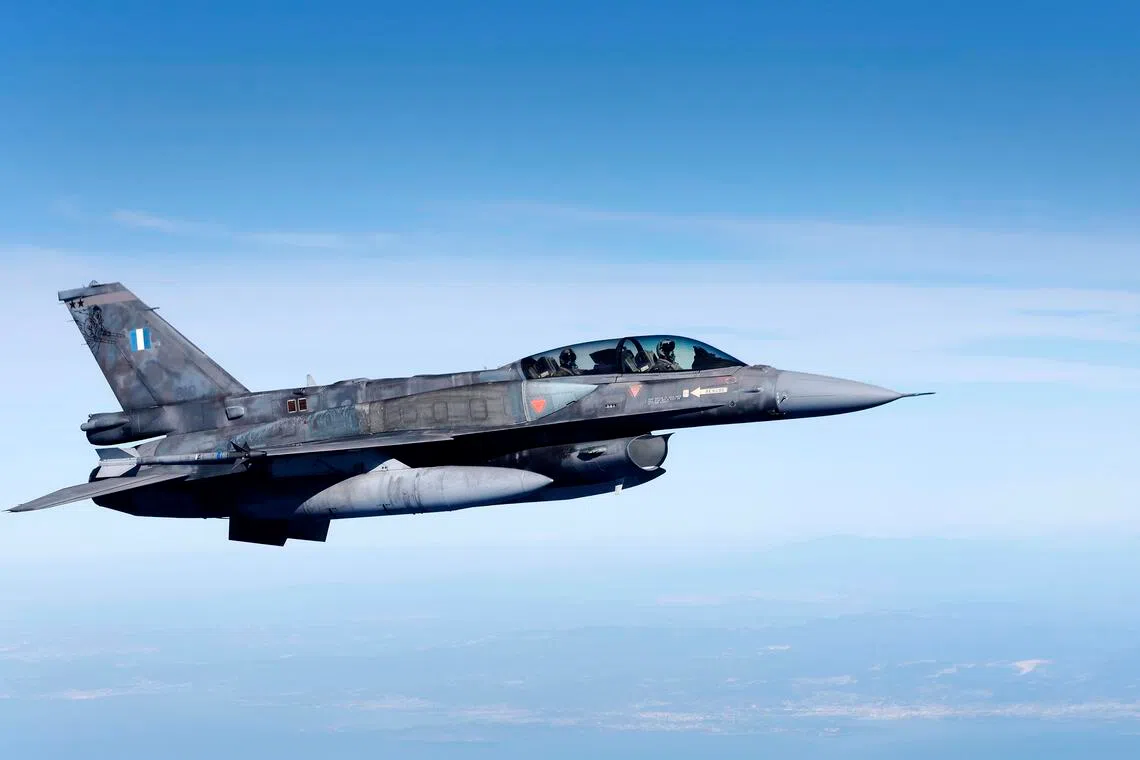Defence chief Hegseth has cleared US Navy’s next-generation fighter, sources say
Sign up now: Get ST's newsletters delivered to your inbox

The F/A-XX will replace the Navy’s F/A-18E/F Super Hornet fleet, which has been in service since the 1990s.
PHOTO: EPA
Follow topic:
WASHINGTON – After months of delay, the Pentagon will select as soon as this week the defence company to design and build the Navy’s next stealth fighter seen as central to US efforts to counter China, a US official and two people familiar with the decision said.
Boeing and Northrop Grumman are competing to be chosen to produce the aircraft, dubbed the F/A-XX. The new carrier-based jet will replace the Navy’s F/A-18E/F Super Hornet fleet, which has been in service since the 1990s.
The decision to move ahead with a selection was made by Defence Secretary Pete Hegseth on Oct 3, the US official and one of the people said.
The US Navy could announce the winner of the competition to build its fighter as soon as this week, one of the people said. But last-minute snags have delayed progress on the Navy jet in the past and could do so again, sources said.
Holdups on the F/A-XX highlight broader questions about the future of naval aviation and the role of aircraft carriers in confronting China.
Delaying the programme or starving it of funds could leave the US Navy without a modern fighter capable of operating from carriers in the 2030s and beyond, potentially undermining the fleet’s ability to project power.
The F/A-XX is expected to feature advanced stealth capabilities, improved range and endurance, and the ability to integrate with both uncrewed combat aircraft and the Navy’s carrier-based air defence systems.
China has been “incredibly ambitious in prototyping sixth generation aircraft and fielding fifth generation fighters and bombers, so this award could be viewed as an important decision to keep pace,” said Mr Roman Schweizer, an analyst at TD Cowen.
Turbulence
A funding dispute in the spring and summer between the Pentagon and Congress delayed the programme’s advancement. The Pentagon sought US$74 million (S$96 million) for the jet to keep it on “minimal development funding”.
Some Pentagon officials sought to delay the programme by up to three years, citing concerns about engineering and supply chain capacity.
Congress and the Navy had wished to move forward with awarding a contract. Congress put US$750 million to speed the F/A-XX jet into the massive tax-cut and spending Bill which was signed into law this summer.
Additionally, Congress earmarked an additional US$1.4 billion for F/A-XX in fiscal 2026.
Beyond the funding dispute, there was also debate during the months-long delay about whether defence contractors Northrop and Boeing would struggle to make the jet on schedule.
Defence officials debated whether Boeing could employ enough engineers for the project after it was awarded a contract to build the US Air Force’s F-47 jet in March, sources said.
They also debated whether Northrop would strain under the ballooning costs of the Sentinel intercontinental ballistic missile programme, aimed at replacing the ageing Minuteman III missiles, the sources said.
The quantity of F/A-XX jets, the value and exact timelines of the programme remain classified, but previous such contracts, such as that for the F-35, have been worth tens of billions of dollars over their lifetime.
The US Navy still plans to buy more than 270 Lockheed Martin F-35C jets for its carrier fleet. Earlier in 2025, Lockheed Martin was ejected from the F/A-XX competition.
The first production jets are expected to enter service in the 2030s, while F/A-18s are expected to remain in service into the 2040s. REUTERS

